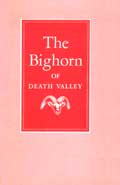.gif)
MENU
![]() Photographs
Photographs
|
Fauna of the National Parks — No. 6
The Bighorn of Death Valley |

|
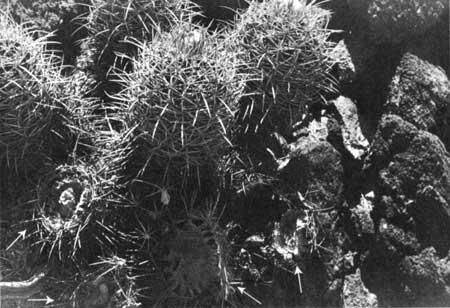
Figure 43.—A mature ram
crushed these cottontop cactuses with the buldge of his horn, then pawed
them open with a front foot. But this is our only observation in 8
years of the full use of his cactus by bighorn in Death Valley,
indicating that generalizations from such single observations can lead
to misconceptions of bighorn life history.
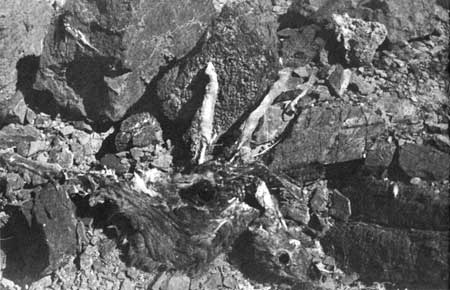
Figure 44.—Small lambs can
vanish quickly in the desert. We last saw this lamb (Little Fuzzy)
alive on August 23, 1957. After we had searched for 3 days, we were led
to its body in this advanced stage of decomposition by circling ravens
and buzzards on August 30. Three months later, there were not even any
bones left.
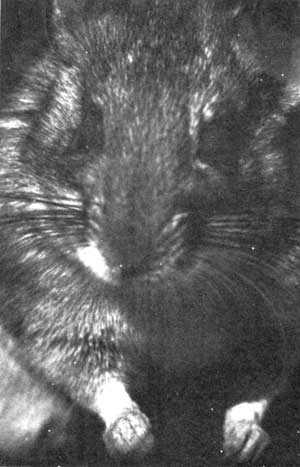
Figure 45.—Pack rats often
confuse the beginner in sign reading by leaving pellets somewhat similar
to lamb pellets and by "browsing" plants both for food and for
nest-building. Additional confusion also can be caused by the browsing
of chuckwallas.
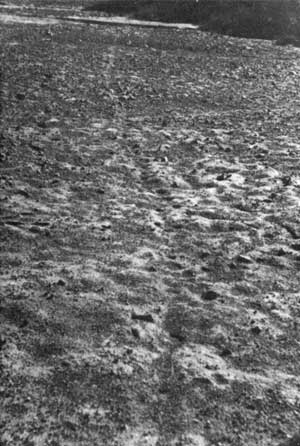
Figure 46.—Game trails are
often reported to us as bighorn trails. On such trails the larger
tracks usually are made by coyotes, and there is no sign of any of those
on the valley floor being used by bighorn. But such tracks still give
impetus among the credulous to the legend of the valley crossing by
bighorn.
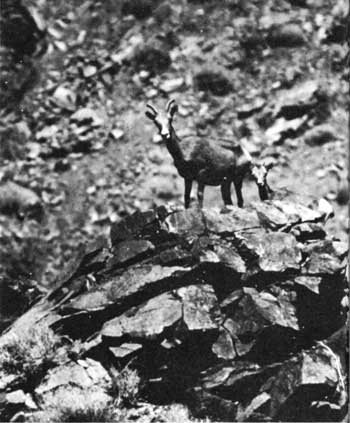
Figure 47.—The rough
gauntness of extremely dehydrated adults on their way to water is often
mistaken for a generally poor condition. The same animals, fat and
sleek from rehydration, can be mistakenly counted the second time as
different animals. This astonishing transformation was observed many
times.
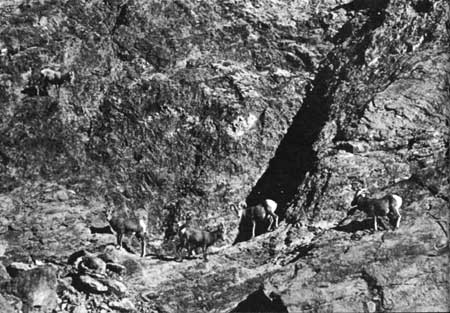
Figure 48.—A possible cause
of mortality is suggested by the propensity of lambs to play on nearly
sheer walls, leaping into the air and kicking their heels. This one
lived to repeat the same antics the next evening until after dark, but
we have found dead ones at the base of cliffs.
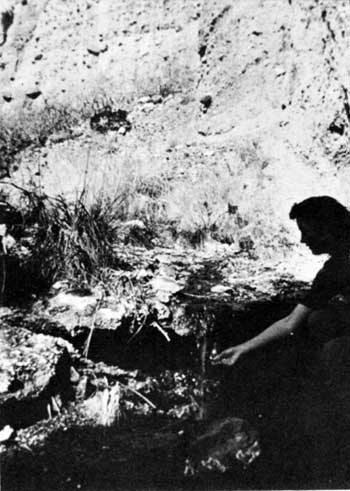
Figure 49.—Forgotten Creek
was rediscovered during this survey. It flows for nearly a mile down a
canyon in the foothills of the Grapevines. We observed no sign of
contemporary bighorn use, although old trails converged on the upper
springs from the foothills. But sign quickly disappears in similar
salty terrain at Nevares Spring as a result of chemical
action.
Continued >>>
 Top
Top
Last Modified: Thurs, May 16 2002 10:00:00 pm PDT
http://www.cr.nps.gov/history/online_books/fauna6/faunap6.htm
![]()
